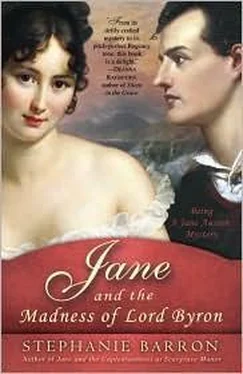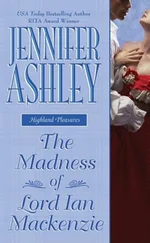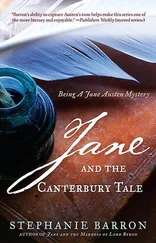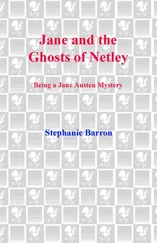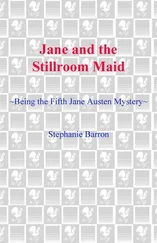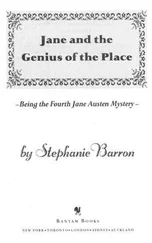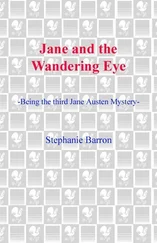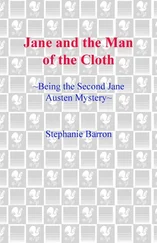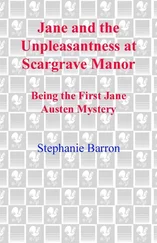Jane recalls events recorded earlier in the journal account subsequently published as Jane and the Ghosts of Netley . — Editor’s note.
Jane refers here to one of the principal thwarted romances in her first novel, Sense and Sensibility , published in 1811. — Editor’s note .
The first edition of Pride and Prejudice , published by Thomas Egerton in January 1813, was acknowledged as having been written “by the Author of Sense and Sensibility” — which had been written anonymously “by a Lady.” Later newspaper advertisements transposed these words as: “by Lady A —.,” which gave rise to much speculation regarding the identity of the supposedly noble authoress. — Editor’s note.
Henry Austen began life as a banker when he was appointed regimental paymaster of the Oxfordshire Militia at the age of twenty-six—the year he married Eliza de Feuillide, his widowed cousin. — Editor’s note.
Thomas Kemp owned most of the land in Brighton at the end of the eighteenth century; his son, Thomas Read Kemp (1782–1844), built Kemp Town in 1823, a significant Regency-style architectural neighborhood between the Royal Crescent and the racecourse on the Downs. The project eventually bankrupted him, and he died on the Continent, unable to meet his creditors’ demands. — Editor’s note.
Although the Prince of Wales underwent a ceremony of marriage with the devoutly Roman Catholic commoner Maria Fitzherbert in 1786, he did so without the royal consent of his father, George III, and the marriage was thus regarded as illegal — by all but Maria Fitzherbert, presumably. The Prince’s subsequent arranged marriage to his royal cousin, Caroline of Brunswick, was regarded as the legitimate union. The Prince’s detractors continued to refer to him as a bigamist, however. — Editor’s note.
Jane’s description of the Marine Pavilion appears almost quaint to a present-day reader, reflecting as it does a simpler palace long since razed. The Chinese wallpaper she mentions, however, is credited with having inspired the Regent’s subsequent renovation of the Pavilion into the present exotic folly. — Editor’s note.
Francis Rawdon, then the second Earl Moira, had been appointed governor-general of Bengal in 1812, and left England later in 1813 without repaying the loans he had drawn on Henry Austen’s bank. — Editor’s note.
Jane confirms here an opinion of Lady Oxford already expressed to her friend Martha Lloyd in a letter dated 16 February 1813. See Jane Austen, Jane Austen’s Letters , Deirdre Le Faye, ed. (Oxford: Oxford University Press, 1995), Letter No. 82.
By this, the Countess of Swithin refers to Princess Caroline, the Regent’s estranged wife, who maintained a separate residence and household. Such a degree of hatred subsisted between the two royals that one could not be a friend to both. — Editor’s note.
Raggett’s was a gentleman’s club opened by the proprietor of the exclusive (and Tory-affiliated) White’s Club in London. At Raggett’s the aristocratic Regency gentleman might secure all the comforts of Pall Mall while exiled in Brighton—gaming, privacy, and a neat dinner free of women. — Editor’s note.
Part of Brighton’s attraction was the belief that sea-bathing was a healthful practice; and for those who could not swim, wooden bathhouses on wheels—drawn to the water by horses—were employed, particularly by women, who were deemed too modest to be seen in wet clothing. The dippers were persons of the serving class who helped bathers descend a ladder into the safe enclosure of the bathhouse once it was immersed in the sea. Having bathed, the lady would once more ascend the ladder with her muslin shift clinging to her body. It was said to be a common practice for idle gentlemen to train telescopes upon the bathing houses, in the hope of seeing various women of their acquaintance in the Regency equivalent of a wet T-shirt contest. — Editor’s note.
“To cut Wisdoms” refers to the emergence of wisdom teeth—a phrase suggesting age, experience, and knowledge of the world. — Editor’s note.
The Countess refers here to events set down in Austen’s third journal of her detective adventures, Jane and the Wandering Eye. — Editor’s note.
Jane would appear to be describing what we should term a steeplechase; a race derived from the gentlemanly habit of riding to hounds at a punishing pace, rather than a flat course designed solely for speed. — Editor’s note.
The Quorn Hunt, founded in 1696 by Mr. Thomas Boothby of Tooley Park, Leicestershire, is still in existence today. It was considered one of the most rigorous, demanding, and exciting of the hunts of Jane Austen’s time, and to be invited to ride with its members conferred considerable prestige. It takes its name from the village of Quorn, where the pack was kenneled from 1753 to 1904. — Editor’s note.
In 1822, the Regent had a tunnel dug from the Pavilion to his riding school and stables, which is still in existence today. He had long been rumored, however, to possess a similar tunnel leading to Mrs. Fitzherbert’s villa, as well as this one leading to the King’s Arms. As the original pub no longer exists, the existence of a tunnel leading from it to the Pavilion is impossible to verify. — Editor’s note.
In Austen’s day, prostitutes strolled through the crowds of theatergoers during intermission at Covent Garden, plying their trade. — Editor’s note.
Hazard was a form of gambling with dice that led eventually to the present game of shooting craps. — Editor’s note.
